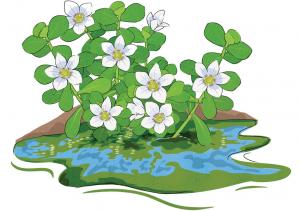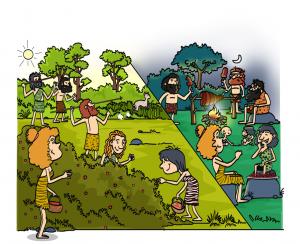
Integrating algae as an irrigation technique can boost water retention and support sustainable cultivation of medicinal plants like Brahmi.

This entry won the first prize in the Class 11–12 category of the Dialogue Dhamaka Contest. This comic contest invites young eco-enthusiasts to give Babbi her voice—capturing wit, wisdom, and critical thinking about food and climate. Participants explore Babbi’s world, learn from her adventures, and craft dialogues that bring her quirky insights into life. The most creative entries are edited and published here to celebrate their talent.

This entry won the second prize in the Class 11–12 category of the Dialogue Dhamaka Contest. This comic contest invites young eco-enthusiasts to give Babbi her voice—capturing wit, wisdom, and critical thinking about food and climate. Participants explore Babbi’s world, learn from her adventures, and craft dialogues that bring her quirky insights into life. The most creative entries are edited and published here to celebrate their talent.

Food is happiness (and vice versa). We may never need an excuse to sink our teeth into a lip-smacking delicacy, but what food do we eat when we want to celebrate? What festivals do we celebrate as an excuse to savour the season’s first delights? What is the connection between the food we eat, the festivals we have, and our environment? In this day and age of food that is fast and largely unhealthy, do our festivals play a role in bringing to our plates food that is good? Let’s get a taste of it all, as we step into this festival season...

Understanding why we celebrate harvest festivals, what are their diversities, and how they connect us with our environment.

Whenever that sweet tinkling sound traverses through my balcony, my entire mood rejuvenates. I crane my neck, investigating its source, and scan my lushy green enclave for a soft jingling song. Tracing the tsee…tseer… notes, I rejoice with delight on spotting the chirpy, cute, bundle of joy—the Indian White-Eye.

“Why didn’t you spot the Tiha today, dear?” That’s what my mother used to remind me on the New Year eves, when I was a little child like you. The Indian Roller bird, or the Tiha in Odia, is a very good omen. Believed to be a harbinger of happiness, sighting it is considered auspicious, especially at the beginning of any major life event. In fact, such is the faith in its sanctity that its feathers are preserved as lucky charms. Do you know Odisha, Telangana, and Karnataka have also declared it as their state bird?

In lieu of the Modi era, the Budget 2024-25 took a step forward from 2021 when PM Modi launched 35 crop varieties to address climate change and malnutrition. FM Nirmala Sitharaman announced that new 109 high-yielding and climate-resilient varieties of 32 crops will be released for farmers in this financial year. The govt will undertake comprehensive review of research to develop climate resilient seeds.

In an increasingly climate-risked world what should be our food like? The 4th book in our First Food series brings you some answers in the form of unique recipes and ingredients, culled out from age-old wisdom and traditional knowledge of communities. Sourced from local biodiversity, from weeds and trees, long-lasting seeds, plants with short life-cycles and even those parts of plants that generally go waste. Foods that are very different from those produced by our current unsustainable agriculture systems.

An exhibition of innovative ideas, offering solutions in the sphere of climate change, hosted on 30 January 2024 at the India Habitat Centre, New Delhi. ************ As part of the Green Schools Carnival 2024, the Green Schools Programme (GSP) of the Centre for Science and Environment (CSE) hosted The Solutions Showcase...

